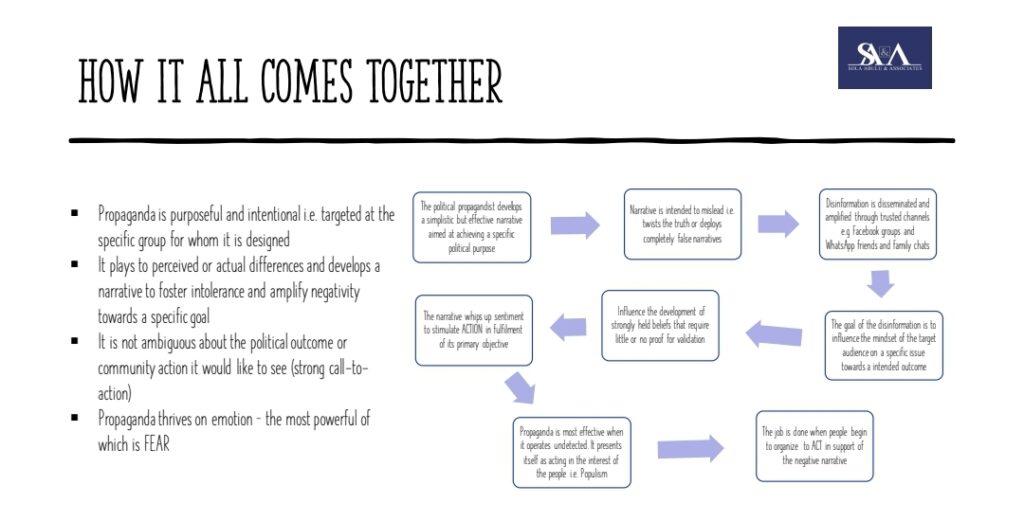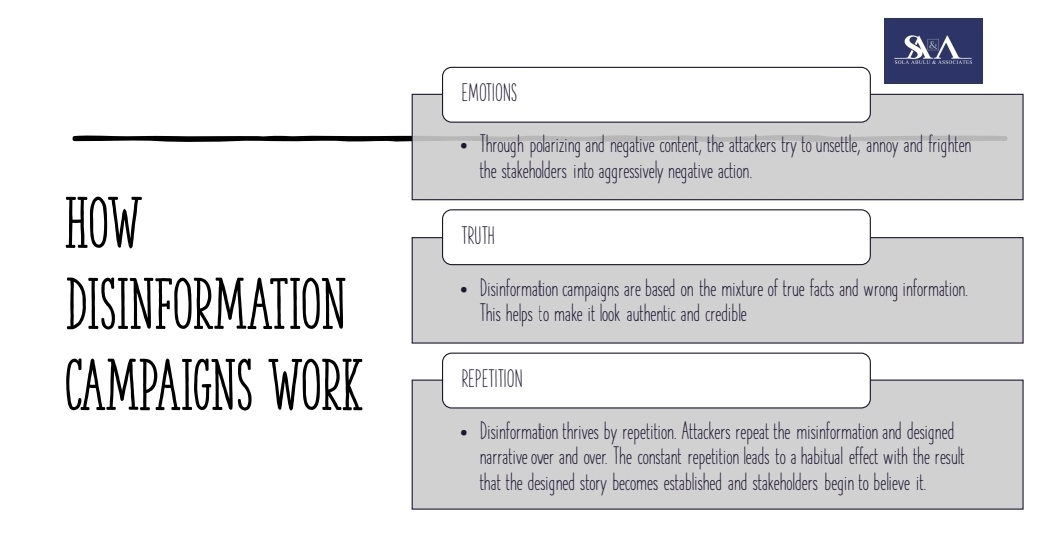What is the difference between strategic communications and propaganda?

Strategic communications has to do with information versus understanding and outcome. For any communications effort to be described as strategic, it has to be purposeful. Sola Abulu has defined the concept of strategic communications as “ …the purposeful use of communication by a business or organization to achieve its objectives in measurable terms.” This video resource is a robust introduction to strategic communications.
This definition lays an emphasis on understanding the business or organizational objectives, identifying stakeholders and the channels that are most effective to reach them, the messaging and what the outcome of a communications effort should be or how that outcome supports the business/organizational goal. It is being intentional rather than tactical with communication.
On the other hand, propaganda as defined by Forbes is:
“information, especially of a biased or misleading nature, used to promote or publicize a particular political cause or commercial point of view.”
This article discusses 4 clues to know if your marketing is propaganda or not.
Sola Abulu, our principal consultant also defined propaganda as a “deliberate effort to manufacture popular opinions and attitudes and thus to control popular conduct; and usually the implication is that the aims of the propagandist are concealed. The objects of the propaganda do not know the purposes of the maker of the propaganda. It is the propagation of ideas, opinions and attitudes that are not made clear to the hearer or the reader.”
You can read the full article here.
The above definition of key terms gives an adequate explanation to the difference between strategic communications and propaganda. In strategic communications, the business or organizational objectives are clear but propaganda is a co-ordinated media campaign with a dishonest intent which is often unclear to the audience. Propaganda aims to manipulate the audience.
The key difference between strategic communications and propaganda is the use of ethical principles. Strategic communication and propaganda are like words and the opposite; to differentiate both is to identify from a communications effort facts and emotions, true and misleading information, probe into sentiments and motives of the messaging, and identify who a narrative benefits and why.

The concept is very common in political communications; however, propaganda can be used in several other areas like commercial advertising, public relations, diplomatic negotiations, legal arguments, and collective bargaining. The aim is to move a large group of people to support an agenda whether it is true or not.
Some key terms in explaining the propaganda
- Misinformation
- Disinformation
- Narrative
- Values
- Beliefs
- Sentiments
- Mindset
- Populism
Strategic communications is intentional and relies on the following theories
- Systems theory
- Stakeholder management theory
- The theory of ethics
You can catch up on our previous article that discusses the theory of strategic communications.
To spot propaganda, focus on the narrative being shared, who frames it and how it is framed (an existential threat to one’s identity). Communications professionals need to be more ethical in practice to adopt strategic communications rather than propaganda.
………………..
Sola Abulu & Associates is a strategy and communications consulting and training firm committed to enabling businesses, brands and organizations to achieve their objectives through strategic communications, organizational effectiveness and reputation risk management.
Chat with us for more information on our courses.
